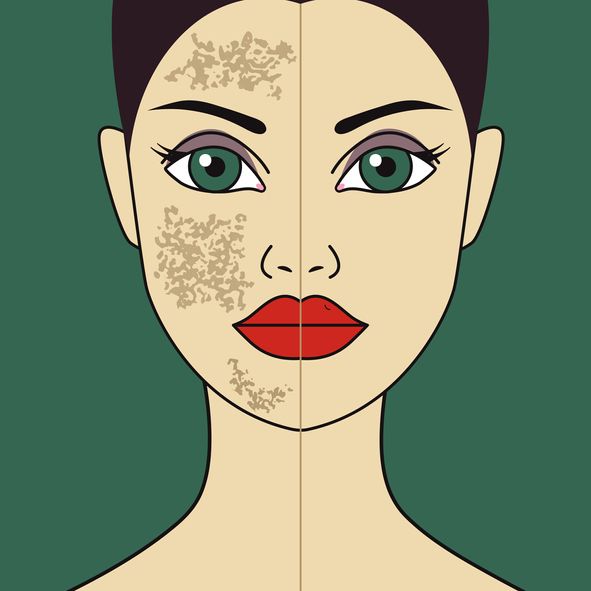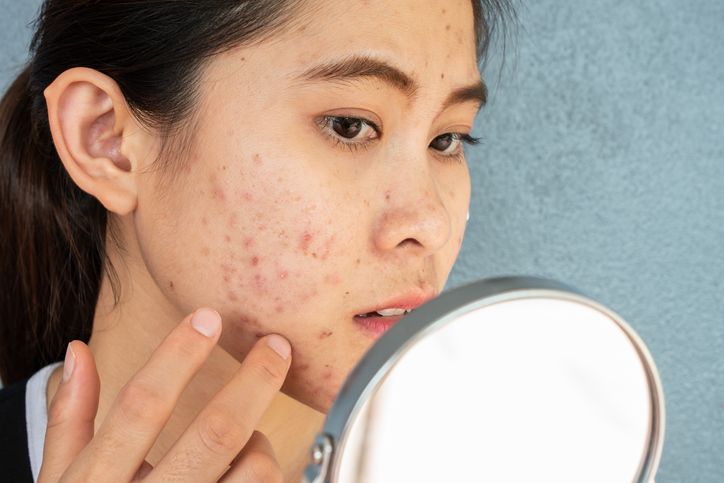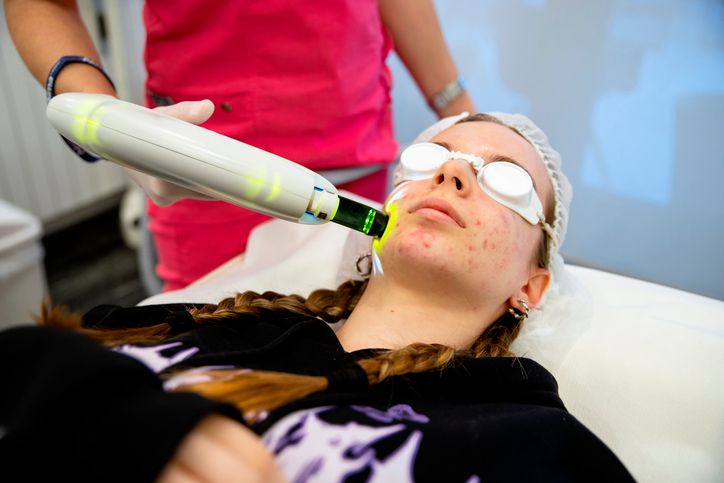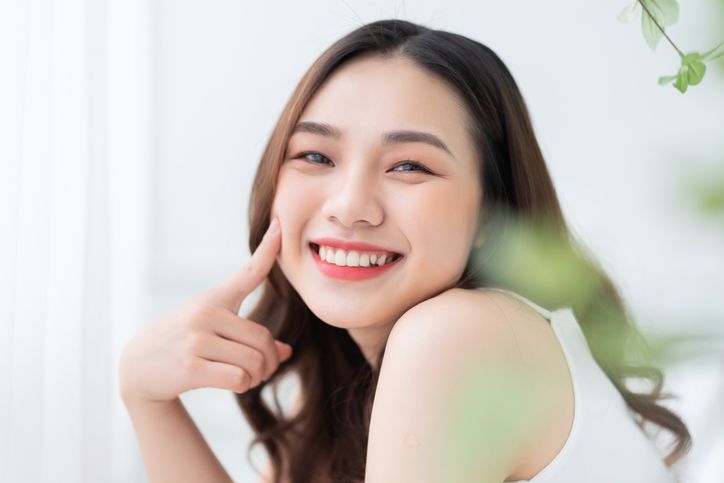- Home
- Trend
- Weight Loss Strategies
- Acne Tips
- Hair Health Information
- Blemish Removal Tips
- Acne Scar Removal Tips
- Muscle Building Techniques
- Intimate Care Tips
- Postpartum Intimate Care
- Eye Bags Wiki
- Tips for Face Slimming
- Secret of Permanent Hair Removal
- Breast Enlargement Tips
- Cure to Snoring
- Marionette Lines
- Skin-Tightening Secrets

免費體驗
Acne Scarring Treatment
1 Minute Self-Registration
Date should not be before minimal date
Pockmarks are a common skin concern that can affect people of all ages. These small craters or depressions on the skin's surface can be a source of frustration and self-consciousness. In this article, we will delve deep into the world of pockmarks, exploring their causes, prevention strategies, and various treatment options. Let's get started on the journey to understanding and managing pockmarks effectively.
1
What Are Pockmarks?

Pockmarks, also commonly referred to as acne scars, are physical reminders of various skin conditions, with acne being the most prevalent contributor. These scars manifest as small, indented craters on the skin's surface, making them easily identifiable. Pockmarks develop when the skin's natural healing process is disrupted, resulting in the breakdown of essential collagen and elastin fibres in the affected region. Pockmarks come in two primary categories, each with its distinctive features:
Icepick Pockmarks
Icepick pockmarks are characterised by their narrow and deep appearance, closely resembling small puncture marks on the skin. These scars are typically known for their pointed and sharp indentations, giving the skin an uneven texture. Icepick pockmarks can be particularly challenging to treat due to their depth and shape.
Boxcar Pockmarks
In contrast, boxcar pockmarks present a wider and more box-like appearance on the skin's surface. These scars have well-defined edges, creating a noticeable contrast with the surrounding skin. Their shape is reminiscent of tiny depressions that can vary in size. While boxcar pockmarks may appear less severe than icepick pockmarks, they can still affect the skin's overall texture and appearance.
Understanding the distinction between these two common types of pockmarks is crucial for individuals seeking skincare solutions and treatments. It allows for a more targeted approach to addressing these scars, which can significantly improve one's skin texture and confidence.
2
Why Do I Have Boxcar Scars or Icepick Scars?

Pockmarks can be a lasting consequence of various skin-related factors. Understanding these underlying causes is essential to addressing and preventing them effectively:
Acne breakouts
One of the primary culprits behind pockmarks is severe acne breakouts. When acne lesions delve deep into the layers of the skin, they have the potential to inflict damage on the surrounding tissue. This damage, if not addressed properly, can lead to the formation of pockmarks. It's crucial to note that not all acne cases result in pockmarks, but severe or untreated acne is a common precursor.
Inflammatory skin conditions
In addition to acne, other inflammatory skin conditions, such as chickenpox or cystic acne, can contribute to the development of pockmarks. In these instances, the skin's response to inflammation can initiate a scarring process. Proper management of these conditions and seeking appropriate medical care is key to minimising the risk of pockmarks.
Trauma and injury
Pockmarks can also result from physical injuries to the skin, such as burns, accidents, or surgical procedures. These scars typically form when the skin's natural healing process is disrupted or when there is excessive tissue damage. Preventing such injuries through cautious behaviour and seeking immediate medical attention when accidents occur can help reduce the likelihood of pockmark formation.
3
Do Icepick Pockmarks and Boxcar Pockmarks Gives You Deep Scars?

Icepick pockmarks and boxcar pockmarks primarily affect the deeper layers of the skin due to the way they form. Here's why:
1. Damage to dermis
Pockmarks, including both icepick and boxcar types, are considered atrophic scars, which means they result from a loss of tissue rather than an excess of tissue. When acne or other skin conditions penetrate deep into the skin's dermis layer, they damage and disrupt the normal collagen and elastin fibres that provide structural support to the skin.
2. Collagen and elastin loss
Collagen and elastin are essential proteins responsible for maintaining the skin's strength, elasticity, and overall structure. When these fibres are damaged or destroyed by inflammation, infection, or injury in the deeper layers of the skin, it leads to the formation of pockmarks.
3. Scar tissue formation
As the body attempts to repair the damaged skin, it often creates fibrous scar tissue. In the case of pockmarks, this scar tissue forms in a way that causes the skin to become depressed, creating the characteristic indented appearance. The extent and depth of the damage to the dermal layer influence whether pockmarks are shallow or deep.
4. Variation in pockmark depth
The difference between icepick pockmarks and boxcar pockmarks lies in the shape and depth of the scars. Icepick pockmarks are typically deeper and narrower, resembling small puncture marks, while boxcar pockmarks are wider and shallower with well-defined edges. These variations in appearance are a result of the depth and extent of damage to the dermis.
Both icepick and boxcar pockmarks affect deeper skin layers because they develop as a result of damage to the dermal layer, including the loss of collagen and elastin fibers. The extent of this damage and the body's response to it determine the depth and appearance of these scars.
4
What are the Treatment Options?

When it comes to addressing pockmarks, there's a range of effective treatment options available, each catering to different severities and types of scars. Here are some of the key treatments to consider:
1. Dermal fillers
What They Do: Dermal fillers are injectable substances, often hyaluronic acid-based, that are used to fill in and smoothen pockmarks. They work by adding volume to the depressed scar tissue, creating a more even skin surface.
How They Work: A dermatologist or skilled practitioner injects the filler directly into the pockmark, elevating the depressed area. This procedure offers immediate results, making it a popular choice for individuals looking for a quick improvement in their skin's appearance.
2. Micro needling
What It Does: Micro needling is a minimally invasive procedure that involves the use of a device equipped with tiny needles to stimulate collagen production in the skin.
How It Works: During micro needling, the fine needles create controlled micro-injuries in the skin. This prompts the body's natural healing response, leading to increased collagen and elastin production. Over time, this encourages the growth of new, healthy skin cells, which can help improve the appearance of pockmarks. Micro needling is known for its ability to enhance skin texture and reduce the visibility of scars.
3. Laser therapy
What It Does: Laser treatments are effective for reducing the depth and visibility of pockmarks by promoting collagen remodelling and skin resurfacing.
How It Works: Various types of lasers, such as fractional laser or CO2 laser, are used to target the scar tissue. The laser energy stimulates collagen production and encourages the skin to heal and renew itself. As a result, pockmarks become shallower, and the overall texture of the skin improves. Laser therapy is known for its precision and ability to target specific areas, making it suitable for treating scars.
4. Collagen induction therapy
What It Does: Collagen induction therapy, also known as microneedling with PRP (Platelet-Rich Plasma), is a procedure that combines microneedling with the application of the patient's own platelet-rich plasma to enhance collagen production.
How It Works: This treatment involves using a microneedling device to create micro-injuries in the skin, similar to traditional microneedling. However, in collagen induction therapy, platelet-rich plasma (PRP) is applied topically or injected into the treated area. PRP contains growth factors that further stimulate collagen production, resulting in improved skin texture and a reduction in the appearance of pockmarks.
5. Acne Scarring Treatment
What it does: The Acne Scarring Treatment by Perfect Medical is a non-invasive procedure designed to improve skin texture and tone, making it an option for addressing pockmarks.
How it works: The treatment employs advanced 1064nm laser technology that penetrates deep into the skin tissue. This laser's photothermal action effectively breaks down excess melanin responsible for acne, allowing the body to eliminate it. Moreover, the laser energy accelerates the production of collagen and elastin, vital for skin tissue repair. This treatment is suitable for a wide range of acne scars, including rolling scars, hypertrophic scars, raised scars, atrophic scars, boxcar acne scars, brown and red spots, ice-pick scars, and more.
Recognizing the challenges posed by these skin imperfections, Perfect Medical incorporates a dual-action spiral suction and drainage technology in this treatment. This process deeply cleanses and exfoliates the pores, extracting oil, dirt, and dead skin cells. After the skin is thoroughly cleansed, a medical-grade hydrating serum is introduced into the pores to rebalance the water-to-sebum ratio and stimulate collagen production, promoting healthier skin.

免費體驗
Acne Scarring Treatment
1 Minute Self-Registration
Date should not be before minimal date
5
Dislike Scar Appearance? Here's the Prevention Strategies You Need to Know

When it comes to preventing pockmarks, it's important to take proactive steps to minimise the risk of scar formation. While complete prevention may not always be possible, here are some strategies that can significantly reduce the chances of pockmark development:
1. Early acne treatment
Why it matters: Swift and effective treatment of acne breakouts is a crucial step in reducing the risk of pockmarks. Uncontrolled or severe acne is more likely to lead to scarring.
What to do: If you're prone to acne, consider consulting a dermatologist for personalised acne management. They can prescribe appropriate medications or skincare routines tailored to your skin type and specific acne issues.
2. Avoid picking or squeezing pimples
Why it matters: Picking or squeezing pimples can worsen inflammation and increase the likelihood of scarring and pockmark formation. These actions can introduce bacteria deeper into the skin, leading to more extensive damage.
What to do: Resist the urge to pop or squeeze pimples. Instead, practise good hygiene by gently cleansing your face with a mild cleanser twice a day. If you're tempted to pick at your skin, keep your hands away and use clean, non-comedogenic skincare products.
3. Protect your skin with sunscreen
Why it matters: Exposure to harmful UV radiation from the sun can worsen existing scars and potentially lead to the formation of new pockmarks. Sunscreen helps shield your skin from these damaging effects.
What to do: Regularly apply a broad-spectrum sunscreen with an SPF of 30 or higher, especially if you have scars or pockmarks. Make sunscreen application part of your daily skincare routine, even on cloudy days. Additionally, wear protective clothing like hats and sunglasses when spending time outdoors.
6
Get Rid of Pockmarks with Natural Remedies to Support Skin Health

In addition to the preventative strategies mentioned earlier, incorporating natural remedies into your skincare routine can play a significant role in promoting skin health and minimising the risk of pockmark formation. Here are some natural remedies and practices to consider:
Aloe vera
Aloe vera is renowned for its soothing and anti-inflammatory properties. When applied topically, pure aloe vera gel can help alleviate skin irritation and assist in the healing process.
Application: Gently apply a thin layer of pure aloe vera gel to areas of the skin prone to irritation or scars. Allow it to absorb for several minutes, and you can leave it on overnight for enhanced results.
Honey
Honey boasts natural antibacterial properties, making it effective in preventing infections and reducing inflammation. It can be particularly helpful for soothing acne-prone skin.
Application: Apply a thin layer of raw honey to areas of your skin prone to acne or irritation and leave it on for about 10-15 minutes. Rinse it off with lukewarm water. Regular use can aid in preventing infection and calming inflammation.
Turmeric
Turmeric contains curcumin, a compound known for its anti-inflammatory and antioxidant properties. Creating a turmeric paste can help soothe and rejuvenate the skin.
Application: Mix turmeric with either water or yoghourt to create a paste. Apply this mask evenly to your face and leave it on for 15-20 minutes. Rinse it off with lukewarm water. Regular use can promote healthier skin and reduce the risk of scarring.
Tea tree oil
Tea tree oil is naturally antibacterial and can help prevent bacterial infections that may exacerbate skin conditions. However, it should be used sparingly due to its potency.
Application: Dilute a few drops of tea tree oil in a carrier oil, such as jojoba or coconut oil. Apply this mixture sparingly to areas with pimples or acne-prone skin. It's essential to perform a patch test before using it on larger areas.
Diet and hydration
A well-balanced diet rich in essential vitamins and minerals is vital for promoting overall skin health. Additionally, staying hydrated by drinking an adequate amount of water helps keep your skin moisturised from within.
Incorporation: Include foods in your diet that are rich in vitamins like A, C, and E, as well as minerals like zinc. These nutrients support skin regeneration and repair. Hydration ensures that your skin remains supple and less prone to dryness.
While natural remedies can complement your efforts in preventing pockmarks, it's crucial to consult with a healthcare provider or dermatologist before incorporating them into your routine, especially if you have sensitive or allergy-prone skin. They can provide personalised guidance on the most suitable natural remedies for your specific skin needs.
7
Last Few Words

Understanding pockmarks and how to deal with them is essential for anyone facing this common skin concern. By following prevention strategies and exploring available treatments, you can definitely regain confidence in your skin's appearance. Remember that consulting a dermatologist is the first step toward effectively managing pockmarks. Embrace the journey to healthier, smoother skin!

免費體驗
Acne Scarring Treatment
1 Minute Self-Registration
Date should not be before minimal date
FAQ

1. Can pockmarks be completely removed?
While complete removal may not always be possible, various treatments can significantly improve their appearance. Depending on the severity and type of pockmarks, treatments like dermal fillers, microneedling, and laser therapy can help reduce their visibility, making them less noticeable.
2. Are pockmarks a permanent condition?
Pockmarks can be long-lasting, but with the right treatments, their appearance can be minimised. Over time and with proper care, the skin can heal and regenerate, leading to improvements in the texture and depth of pockmarks.
3. What is the difference between ablative laser resurfacing and pockmarks?
Ablative laser resurfacing is a cosmetic procedure that uses lasers to remove the top layer of skin, promoting collagen production and improving skin texture. Pockmarks, on the other hand, are indented scars on the skin's surface. The difference lies in their nature and purpose: ablative laser resurfacing is a treatment option, while pockmarks refer to a type of scar.
4. Why is ablative laser resurfacing not suitable to cure pockmarks?
Ablative laser resurfacing may not always be suitable for treating pockmarks because it primarily targets the surface of the skin and is more effective for improving skin texture and tone. Pockmarks often extend deeper into the skin, and their treatment may require procedures that specifically address the loss of collagen and elastin in the affected areas, such as dermal fillers, microneedling, or other scar revision techniques.
5. How do chemical peels interact with pockmarks?
Results of chemical peels on pockmarks can vary depending on the depth and severity of the scars. Chemical peels are designed to exfoliate the top layers of skin and improve skin texture and tone. While they may help in some cases by promoting collagen production and reducing the appearance of shallow pockmarks, they may not be as effective for deeper scars. The choice of treatment should be based on a dermatologist's evaluation of your specific scar type and needs.









